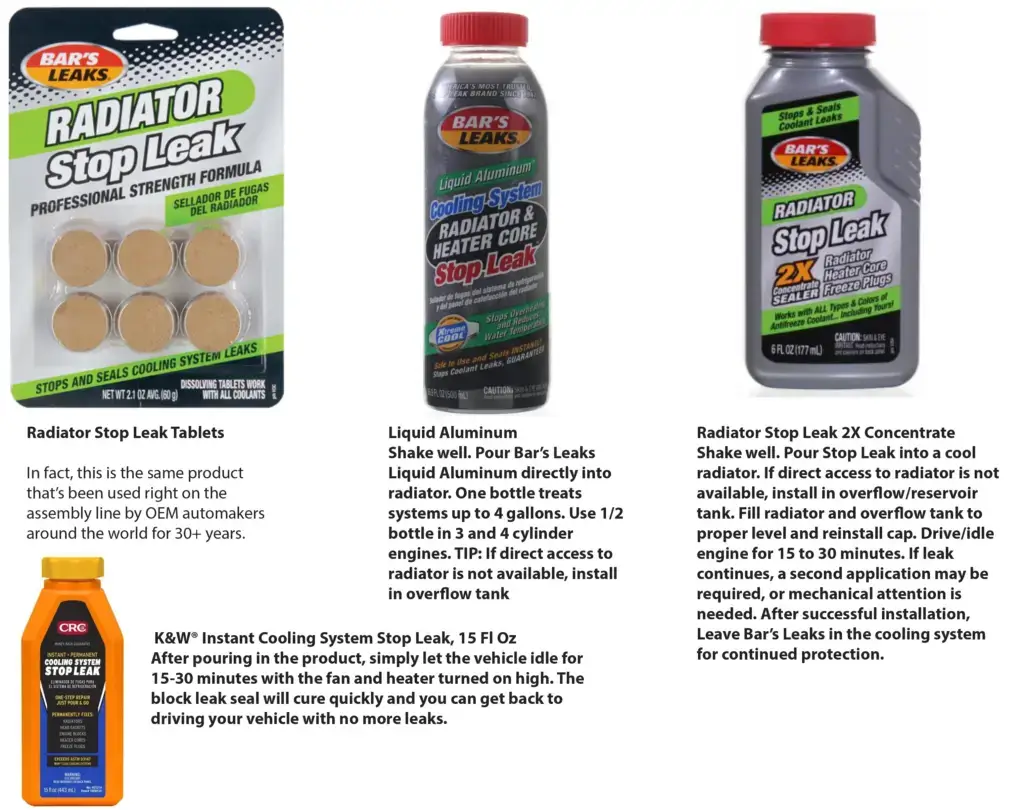Can you fix a radiator leak yourself
You can’t fix modern radiators, but stop leak can buy you some time until you can replace it
Not all radiator leaks can be fixed
Most modern radiators are built with an aluminum core and plastic tanks. The tanks are connected to the core with a sealant and are crimped in place. If the radiator leak is located where the tanks connect to the core, the leak can’t be repaired. However, if the radiator leak is in the small tubes in the core, you can use a stop leak product, as long as you follow the procedures, listed here. But be warned, using too much stop leak to fix a radiator leak can cause clogging throughout the cooling system.
Locate the leak using a cooling system pressure tester and assess whether it’s a candidate for a a DIY fix
Rent a cooling system pressure tester from an auto parts store. Pressurize the system and locate the leak. If the leak produces a small mist of coolant/water, it can probably be fixed with a stop leak product. However, if the leak produces a stream of coolant/water, the hole is too large to be fixed with a stop leak product
Purchase a stop leak product
Several companies make stop leak products; the best known companies are Bars and K&W.
Read the label: Some products require you to flush the system and fill with fresh coolant, while others allow you to simply add the product to your current coolant. However, all the products warns you not to add a stop leak product to a system that’s contaminated with oil from a transmission oil cooler leak or a head gasket leak. In addition, if the system is badly rusted, you must flush the system first.
Add the exact amount of stop leak product to the radiator
Do not add more product than the manufacturer recommends. More is not better and can cause clogs in your car’s heater core.
Run the engine at idle to allow the stop leak product to fix the radiator leak.
Some products require the coolant to be at operating temperature which will require you to run the engine for a while. If the leak is too large to maintain adequate coolant level, then a stop leak product won’t work for you.
Top off the coolant
Once you’re confident that the leak has been resolved, it’s time to refill the radiator with fresh coolant. Refer to your vehicle’s manual to find the appropriate coolant mixture and fill the radiator to the recommended level. Remember to also check the coolant reservoir and top it up if necessary.
Monitor for Leaks
After refilling the radiator, monitor the vehicle closely for the next few days. Keep an eye out for any signs of coolant leaks or changes in engine temperature. If you notice anything unusual, it’s essential to address it promptly to prevent any further issues.
©, 2023 Rick Muscoplat
Posted on by Rick Muscoplat
